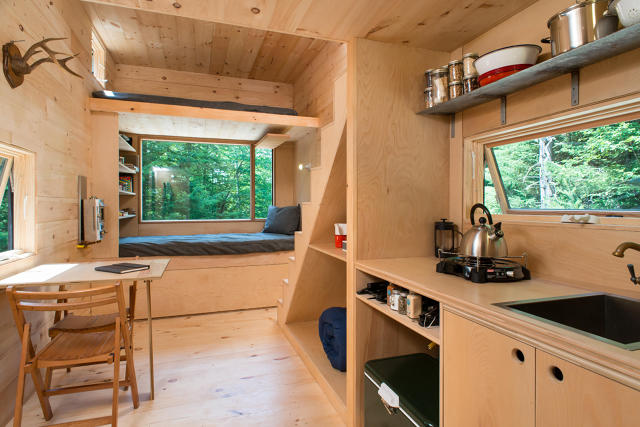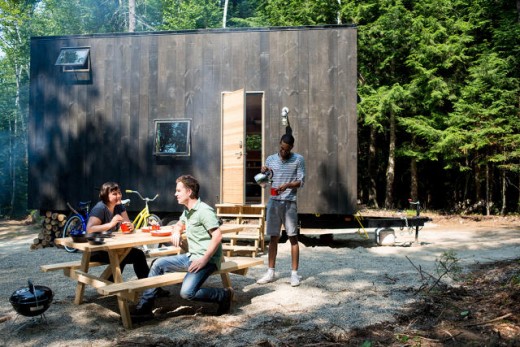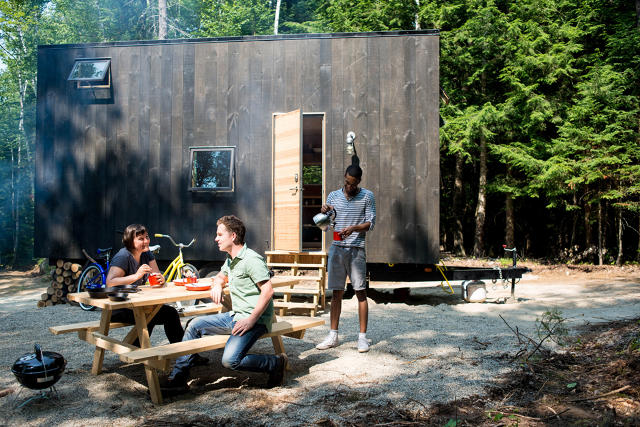Think You’re Cut Out For Tiny House Living? Now You Can Book A Short Stay And See
Getting rid of all your junk to join the “tiny house” movement is a big leap. A new startup from Harvard wants to help people ease into the idea.
Living in a tiny house might be the millennial version of the American dream, but for most of us, it’s more of an Instagram-fueled fantasy than something we’re likely to do in the near future. A new startup is helping people take the first step: If you’ve ever wished you had a tiny house of your own, now you can try living in one for a night or a weekend.
“We’re making tiny houses accessible to people who otherwise can’t experience them,” says Jon Staff, CEO of Getaway, a company launched at Harvard’s Innovation Lab. The company recently opened its first 160-square foot, off-grid tiny house in the woods near Boston, and will soon add more.

Anyone can book time with friends in the house and realize that its diminutive size doesn’t mean it’s not livable. “The term tiny houses has a lot of magic and romance and captures folks’ attention, but it also leads people to think they might be too tiny,” he says. “In fact, our first house sleeps four people in real beds. Even if it’s 160 square feet, which sounds small, you can hang out with six people.”
The houses, designed by students at Harvard’s Graduate School of Design, are meant to be simple. “Part of what you see sometimes with tiny houses and micro apartments is you get all this Rube Goldberg-y, whiz-bang design—beds that come out of dresser drawers and out of the ceiling and all kinds of crazy stuff,” Staff says. “We avoided all of that. Because the best way to design in a tiny house, we think, is to realize it’s small and make the most use of the space you have.”

Each house will be set on land leased from local landowners. Because they’re completely off the grid, with solar power and composting toilets, each can be set up in less than an hour, and if it ever needs to move, it can be driven away without impacting the land. The company sees it as an interesting way to help landowners gain new value from land that couldn’t be used for anything else.
“Traditionally you can’t do much with raw land, and can’t make much money off it, especially if it’s wooded,” Staff says. “We’ve come up with a way for people who own this land to make some money off it.”
Inspired by summer lake houses that older generations might have visited every year on family vacations, the tiny houses will be stocked with classic books and board games. The emphasis is on the people you’re with and the place you’re visiting, rather than the material features of the home. Even if Getaway doesn’t lead everyone to start planning to build a tiny home, the founders think it may help people reconsider their everyday lives.

“People will go to a Getaway house and then go back and think about how they live,” Staff says. “They might not ever live in a tiny house, but they can think about what they own and how they live and what they care about—if all the stuff they have and space they have really makes them happy.”
For those who do want a tiny house, staying in the home is meant to be one step in getting closer to that goal. “Right now people who are into the tiny house movement, for most of us, that means posting articles or slideshows on Facebook about it,” says Pete Davis, co-founder of Getaway. “Then there’s this huge gap to actually living in a tiny house. We want to fill in that gap.”
The founders also helped start the Millennial Housing Lab, an “action lab” that is trying to push forward other parts of the tiny housing movement, such as forming tiny house neighborhoods, helping people access land for their home, and financing.
“These things are fairly affordable to build because they’re small…but banks don’t know what they are yet,” says Staff. “If you have the same sort of loan you can get on a 5-bedroom house on a tiny house, they become a lot more accessible to a lot more people really quickly.” The team hopes to offer the first tiny house mortgage in the next five years.
“Tiny houses aren’t going to reach that tipping point if it’s just about the houses, and just about the design,” says Davis. “There needs to be work done and boundaries pushed on the whole ecosystem of living in a tiny house.”
Fast Company , Read Full Story
(89)














